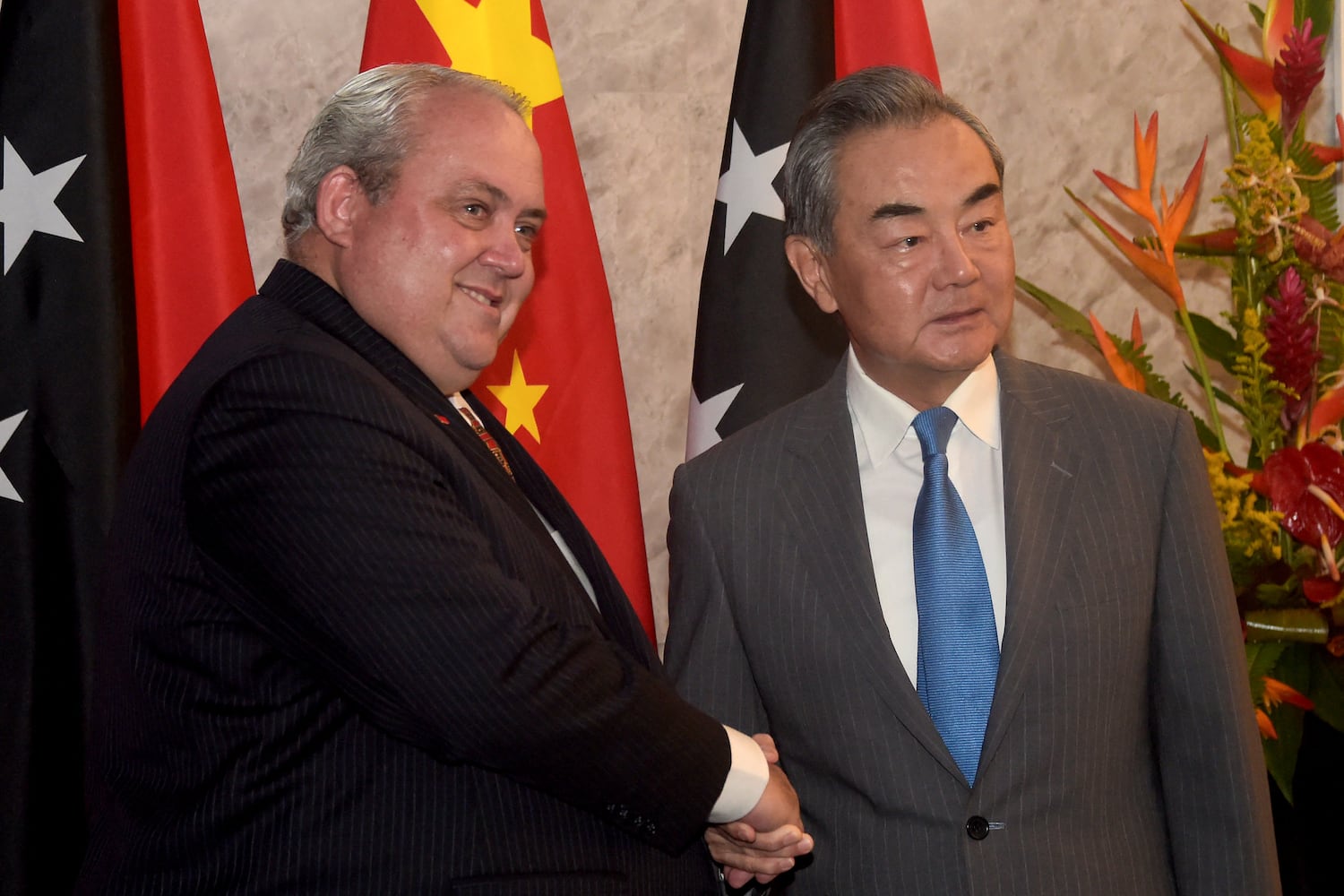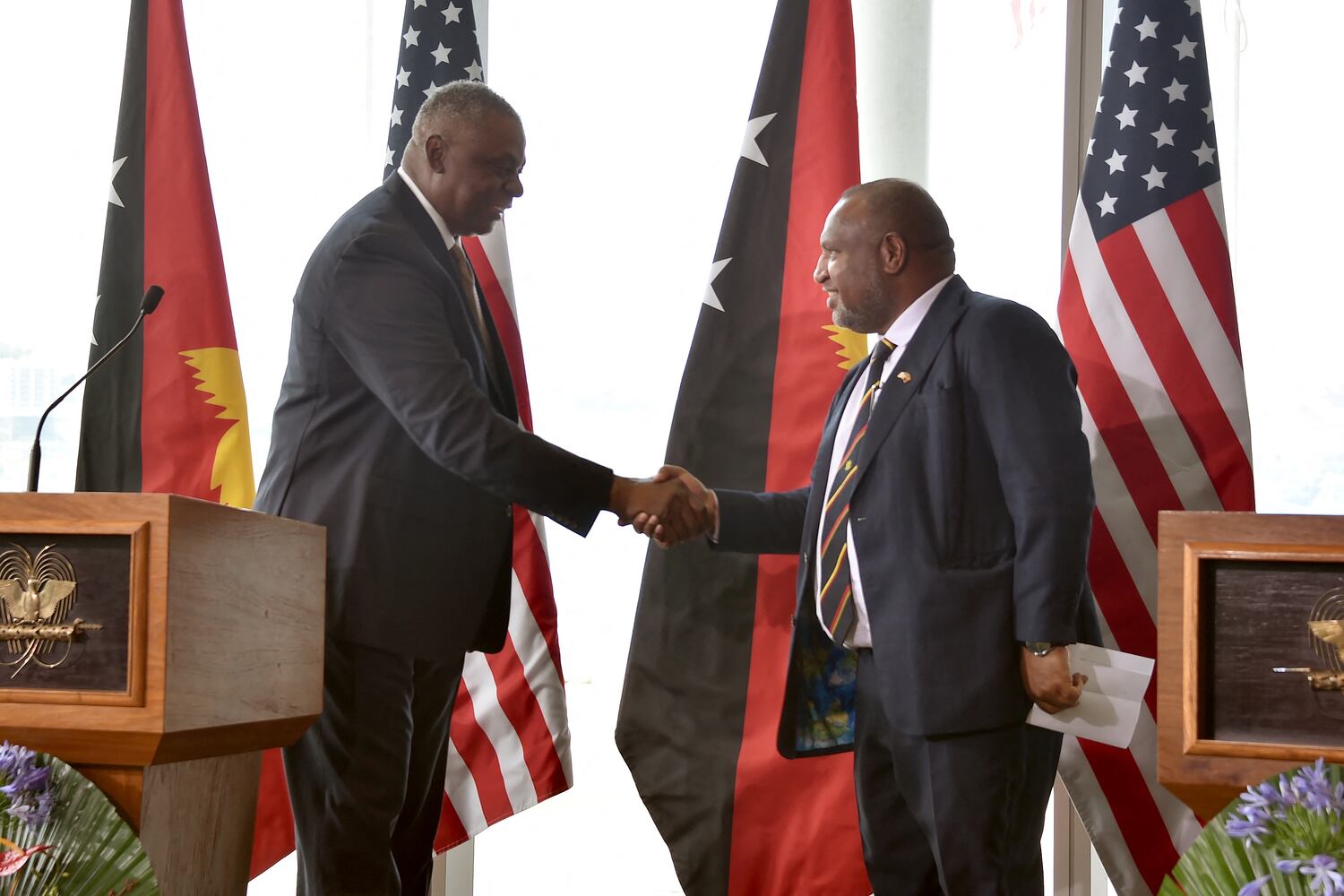Read this story on BenarNews
SYDNEY — The United States will spend more than $864 million on infrastructure and military training in Papua New Guinea over 10 years under a defense deal signed between the two nations in 2023, PNG’s foreign minister has said.
No figure putting a value on the agreement has previously been publicly released.
The size of the package reflects increasing U.S. security engagement with Pacific island nations as it seeks to counter China’s inroads in the vast ocean region.
The proposed investment is part of a defense cooperation agreement, signed in May 2023, that gives the U.S. military “unimpeded access” to develop and deploy forces from six ports and airports, including the Lombrum Naval Base.

“The agreement is over 3.5 billion [kina] in investment in infrastructure development, training, equipment for the benefit of security in our region,” PNG Foreign Minister Justin Tkatchenko said in a speech on Monday in the Australian city of Sydney.
“It shows you the commitment that the United States now has directly with PNG. Before they used to allow Australia, for example, to look after the region. Now, the United States has taken the lead itself to deal with our Pacific island countries.”
A spokesperson from the U.S. Embassy Port Moresby said the agreement “does not have a dollar amount associated with it,” but was aimed at addressing shared defense and security challenges.
In PNG’s 2025 national budget, released last month, 441.9 million kina (US$109.2 million) was set aside for defense spending, which is projected to fall to around 400 million kina in the coming years.
Australia has for decades been PNG’s leading security partner under a bilateral program that contributed US$31.8 million in 2022–23, according to the Australia Army Research Center.
The poor state of PNG defense forces has been a long-running concern for both the PNG and Australian governments.
Mihai Sora, director of the Pacific islands program at the Lowy Institute, said the amount suggested by Tkatchenko was substantial, and would be “commensurate with PNG’s scale as by far the largest Pacific country” and the high level of external support needed for security and law enforcement.
But he said it was important not to lose sight of the scope and scale of Australian assistance to PNG over the last few decades.
“The U.S.’s recent contributions, though laudable, don’t really compare,” he told BenarNews. “And there’s the question of how much of what the U.S. has announced will it be able to actually get through Congress and will we see on the ground in PNG or elsewhere in the Pacific.
“Given both Australia and the U.S. have security agreements with PNG, all three countries will be coordinating on national and regional security very closely into the future.”
Although Donald Trump’s election victory has prompted questions around the world about whether the U.S. will be a less reliable ally, Tkatchenko said he was confident the defense relationship would endure.
“We would like to ensure that the DCA continues because the work has already started,” he said. “Runways are being constructed, wharfs are being constructed. Fuel storage facilities are now being constructed as we speak, and many, many other programs.”
PNG, the most populous Pacific island country, is rich in natural resources and strategically located with “one foot in Southeast Asia and one foot in the Pacific,” Tkatchenko said.
Its proximity to Guam – the main U.S. military hub in the Western Pacific – and Australia also makes it a critical point from which American forces and material can be staged and deployed in the event of a regional conflict, including in East Asia.
The 15-year defense cooperation agreement allows for the transit, maintenance and refueling of U.S. aircraft and vessels, and prepositioning of personnel and disaster relief materials. Some facilities identified in the deal, or parts of them, can be used exclusively by U.S. forces, which have permission to refurbish them.

During a visit to Port Morseby last year, U.S. Defense Secretary Lloyd Austin said Washington is not seeking a permanent military base in the country. But America’s security footprint is growing.
Ann Marie Yastishock, the U.S. ambassador to PNG, Solomon Islands and Vanuatu, said defense exercises in the Pacific nation had increased by 25% between 2023-24, from four to five.
Visits by U.S. Navy and Coast Guard vessels to PNG’s waters had grown by 27% over the same period, from 11 to 14, she said at the same investment event in Sydney.
The U.S. military had also finished building a bunkhouse at Igam Barracks, near Lae, and would award three more small-scale infrastructure projects this year, with work to begin in 2025.
“We will continue to exercise with the Papua New Guinea Defense Force in bilateral and multilateral exercises,” she said. “We also have additional plans of small incremental increases in Department of Defense personnel in the country, as well as looking for additional training opportunities.”
Following decades of neglect, U.S. interest in the Pacific was galvanized in early 2022 after Beijing and the Solomon Islands signed a security pact. Washington and allies such as Canberra feared it could lead to a Chinese military presence in a region they consider crucial to their defense and security.
China has also emerged as a key development partner for many economically-lagging Pacific nations as it seeks to isolate Taiwan diplomatically and reshape global institutions in its favor.
Beijing was “a friend of PNG” and an important economic partner, Tkatchenko said, but “at the end of the day … we keep to our traditional security partners.”
BenarNews is an RFA-affiliated online news organization.
This content originally appeared on Radio Free Asia and was authored by Harry Pearl for BenarNews.
This post was originally published on Radio Free.